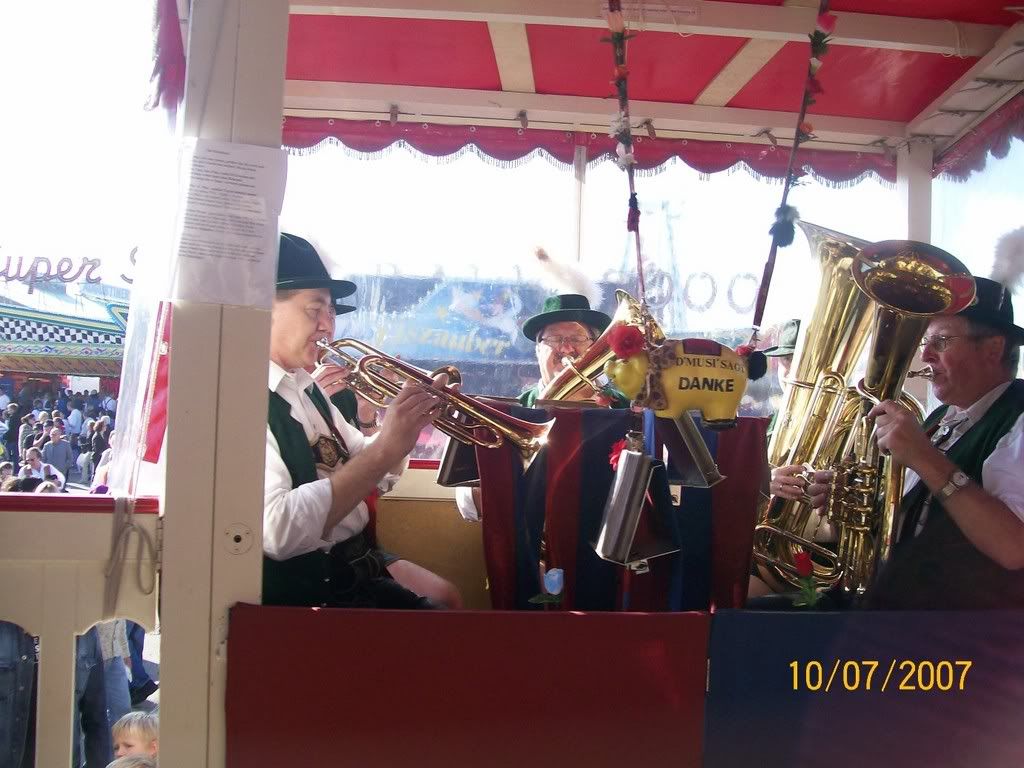 From Wikipedia's Accordion Page:
From Wikipedia's Accordion Page:
"The accordion is a box-shaped musical instrument of the bellows-driven free-reed aerophone family, sometimes referred to as a squeezebox. A person who plays the accordion is called an accordionist.
It is played by compressing or expanding a bellows whilst pressing buttons or keys, causing valves, called pallets, to open, which allow air to flow across strips of brass or steel, called reeds, that vibrate to produce sound inside the body."
I had thought that the accordion was originally from the Italian peninsula. Actually it was probably invented in Berlin in 1822 by Christian Friedrich Ludwig Buschmann; and in any case, it is definitely German in origin. From there, it spread all over Europe. From Spain and Portugal, it was transplanted to Latin America; and ultimately all over the globe through the Western European colonies. The accordion is one of the instruments used in Polka music.
"The polka is a lively Central European dance and also a genre of dance music familiar throughout Europe and the Americas. It originated in the middle of the 19th century in the Czech lands and is still a common genre in Lithuanian, Czech, Croatian, Slovenian, Polish, German, Hungarian, Austrian, Italian, Ukrainian, Belarusian, Russian, and Slovakian folk music. Versions are also found in the Nordic countries, Ireland and Latin America, especially Mexico."
Typical instruments include drum kit, tuba, semi-acoustic guitar, accordion, trumpet, and clarinet. While the accordion was integrated into many types of European folk music; it appears that polka music is mostly centered around the Slavic world. However, it too was transplanted all over Europe to some degree. It appears that the origin is "Bohemian" (Czech). As with the accordion, there is a definite tie-in to our culture. I can recall several times in the past when athletes were sent to professional sports teams in particularly the northern stretches of the Midwest; that they were jokingly informed that "this is a Polka town." That sort've went over my head at the time, but I can see the significance much more now.
There's a connection to the popularity of Polka music, over the many decades, to the destination points of central European immigrants. In Chicago, there was the Polish influence (also Czech); which seems to be the predominant Polka influence in the United States. There are also specifically "Italian" (northern nations actually) folk style Polka bands in the Midwest. There is one cable network called the RDF-TV (Rural Free Delivery) network, which is entirely devoted to "rural American culture." One program is called 'The Big Joe Polka Show', and features polka music and dancing.
Our cultural tie-in to polka music is a perfect example of how people are sometimes made to believe that they have no historical connection to something, when actually they do. I'm assuming that most Italian-Americans, understandably, would believe that they have no roots in polka music; and we're basically sort've roped into that idea. Actually, in many ways, our roots are tied right into central European traditions over many centuries. The accordion comes down from German regions, polka music crosses down from Slavic areas, the polenta dish crosses north over the Alps, etc.
One night late, when viewing 'The Big Joe Polka Show', I saw Joe Siedlik announce a band which performed Slovenian-style polka music. What I found interesting about that is that San Francisco had/has a sizable Slovenian and Croatian American population, of course going back a century or more; along with our people of northern nations origin, and Germans, Scandinavians, Hungarians, etc.. I just wonder if polka music was popular in earlier decades in San Francisco? Perhaps someone can clue us in on that. Again, we're likely to believe that we have no tie-in to the Midwest, when in fact there is one it would seem. To put it bluntly, we didn't ask for this area to be entirely transformed the way it has.
From Wikipedia's Yodeling Page:
"Yodeling (or yodelling, jodeling) is a form of singing that involves singing an extended note which rapidly and repeatedly changes in pitch from the vocal or chest register (or "chest voice") to the falsetto/head register; making a high-low-high-low sound. This vocal technique is used in many cultures throughout the world.
"In Alpine folk music, it was probably developed in the Swiss Alps and Austrian Alps as a method of communication between mountain peaks, later becoming part of the region's traditional music. In Persian classical music, singers frequently use tahrir, a yodeling technique that oscillates on neighbor tones. In Georgian traditional music, yodelling takes the form of krimanchuli technique, and is used as a top part in three/four part polyphony. In Central Africa, Pygmy singers use yodels within their elaborate polyphonic singing, and the Shona people of Zimbabwe sometimes yodel while playing the mbira[1]. Yodeling is often used in American bluegrass and country music. According to the Oxford English Dictionary the word yodel is derived from a German word jodeln (originally Bavarian) meaning "to utter the syllable jo."
Although yodeling started in Switzerland and Austria, it is known to have been utilized, over the centuries, in at least Trentino-Alto Adige. It's not clear to me if that is only in the culturally German "South Tyrol" (Alto Adige), or in Trento and other subalpine areas. It would seem to be more-or-less native to any Alpine region (Alpine France, Slovenia, Piemonte, etc.). Perhaps someone can clue us in there as well. Of course, you may find a lot of samples of these musical styles on YouTube; and I would recommend taking a listen to Taylor Ware singing and yodeling, if you haven't already. She's an American girl who took up singing/yodeling, and is extremely good at it.

No comments:
Post a Comment